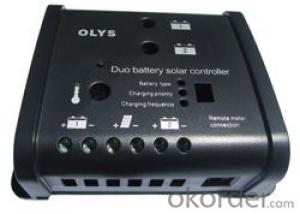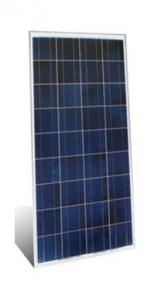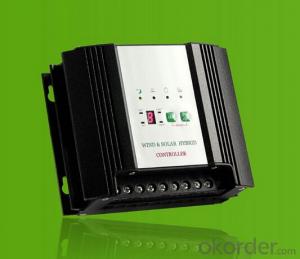RV Solar power controller+LCD display+Remote meter(Options)
- Loading Port:
- Shekou
- Payment Terms:
- TT OR LC
- Min Order Qty:
- 100 unit
- Supply Capability:
- 100000 unit/month
OKorder Service Pledge
OKorder Financial Service
You Might Also Like
1.The controller is ideal for use with motorhomes, caravans, boats or anywhere there are two independent batteries for instance a starter battery and a leisure battery.
2.Optional LCD Remote meter, you can monitor the charging parameter visual.
3.Automatic recognize 12V or 24V system.
4.The Charging percentages for each battery can be set manually if required.
5.PWM charging, high precision temperature compensation
6.Over charging, short-circuit, reverse polarity & reverse current to PV Protection
Technical data
Float voltageMODEL SDC10 SDC20 Maximum charge current 10A 20A Regulation voltage Automatic recongnize 12V/24V battery type Sealed battery Gel battery Flooded battery regulate voltage 14.2V 14.4V 14.6V Boost voltage 14.4V 14.6V 14.8V 13.7V 13.7V 13.7V Maximum solar voltage 30V Battery voltage range 1-15V Self-consumption 4mA at night, 10mA at charging Metebus connection 8PIN RJ45, 10m Temp.compensation -30mV Terminals 4mm2 temperature -35℃~55℃ Dimension 136.6×104.6×43.4mm weight 0.2kg(main), 0.15kg (remter) IP IP22
All the data is for 12V, For 24V, use 2×
- Q:Can a solar controller handle power fluctuations from the inverter?
- Yes, a solar controller can handle power fluctuations from the inverter. The solar controller regulates and controls the flow of electricity from the solar panels to the battery bank, ensuring a stable and consistent power supply. It is designed to handle fluctuations in power output from the inverter and maintain a steady flow of energy to the batteries.
- Q:How do I determine the correct wire size for a solar controller?
- To determine the correct wire size for a solar controller, you need to consider the maximum current that will flow through the wire and the distance it needs to travel. You can refer to the manufacturer's specifications for the solar controller to find the maximum current rating. Then, use a wire gauge chart or an online calculator to determine the appropriate wire size based on the maximum current and the distance the wire needs to cover. It's important to choose a wire size that can handle the maximum current without excessive voltage drop to ensure the solar controller operates efficiently and safely.
- Q:What is the maximum discharge efficiency of a solar controller?
- The maximum discharge efficiency of a solar controller can vary depending on the specific model and its design. However, in general, a high-quality solar controller can have a discharge efficiency of up to 95% or even higher.
- Q:Can a solar controller be used with a solar-powered disaster relief system?
- Yes, a solar controller can be used with a solar-powered disaster relief system. A solar controller helps regulate and optimize the charging of batteries in a solar system, ensuring maximum efficiency and prolonging battery life. In a disaster relief system, where reliable power is crucial, a solar controller is essential to effectively harness and store solar energy for emergency use.
- Q:What is the maximum temperature range a solar controller can operate in?
- The maximum temperature range in which a solar controller can operate typically varies depending on the specific model and manufacturer. However, most standard solar controllers can operate within a range of -40°C to 60°C (-40°F to 140°F). It is always advisable to consult the product specifications or contact the manufacturer for accurate information regarding a particular solar controller's temperature operating range.
- Q:How does a solar controller prevent overcharging?
- A solar controller prevents overcharging by monitoring the battery voltage and adjusting the charging current accordingly. When the battery reaches its full capacity, the solar controller reduces or stops the charging current to prevent overcharging, which can damage the battery and reduce its lifespan.
- Q:What is the maximum current that a solar controller can handle?
- The maximum current that a solar controller can handle varies depending on the specific model and manufacturer. However, most solar controllers are designed to handle currents ranging from 10 to 60 amps. It is important to check the specifications of the particular solar controller you are using to determine its maximum current capacity.
- Q:Can a solar controller be used in a solar-powered drone delivery system?
- Yes, a solar controller can be used in a solar-powered drone delivery system. A solar controller is designed to regulate the energy flow from solar panels to batteries, ensuring efficient charging and preventing overcharging. In a solar-powered drone delivery system, the solar controller would be crucial in managing and optimizing the power supply to the drone's batteries, allowing for extended flight time and reliable operation.
- Q:What is the maximum voltage input for a solar controller?
- The specific model and manufacturer determine the maximum voltage input for a solar controller. Generally, solar controllers can accommodate voltage inputs ranging from 12 to 48 volts. To determine the exact maximum voltage input for a particular solar controller model, it is essential to refer to the product specifications or seek guidance from the manufacturer's guidelines.
- Q:Can a solar controller be used with a solar-powered spa or wellness center?
- Yes, a solar controller can be used with a solar-powered spa or wellness center. A solar controller is designed to regulate and optimize the charging and discharging of batteries in a solar power system. By connecting the solar panels, batteries, and spa or wellness equipment to the solar controller, it ensures efficient utilization of solar energy to power the facility effectively.
1. Manufacturer Overview |
|
|---|---|
| Location | |
| Year Established | |
| Annual Output Value | |
| Main Markets | |
| Company Certifications | |
2. Manufacturer Certificates |
|
|---|---|
| a) Certification Name | |
| Range | |
| Reference | |
| Validity Period | |
3. Manufacturer Capability |
|
|---|---|
| a)Trade Capacity | |
| Nearest Port | |
| Export Percentage | |
| No.of Employees in Trade Department | |
| Language Spoken: | |
| b)Factory Information | |
| Factory Size: | |
| No. of Production Lines | |
| Contract Manufacturing | |
| Product Price Range | |
Send your message to us
RV Solar power controller+LCD display+Remote meter(Options)
- Loading Port:
- Shekou
- Payment Terms:
- TT OR LC
- Min Order Qty:
- 100 unit
- Supply Capability:
- 100000 unit/month
OKorder Service Pledge
OKorder Financial Service
Similar products
New products
Hot products
Hot Searches
Related keywords





























